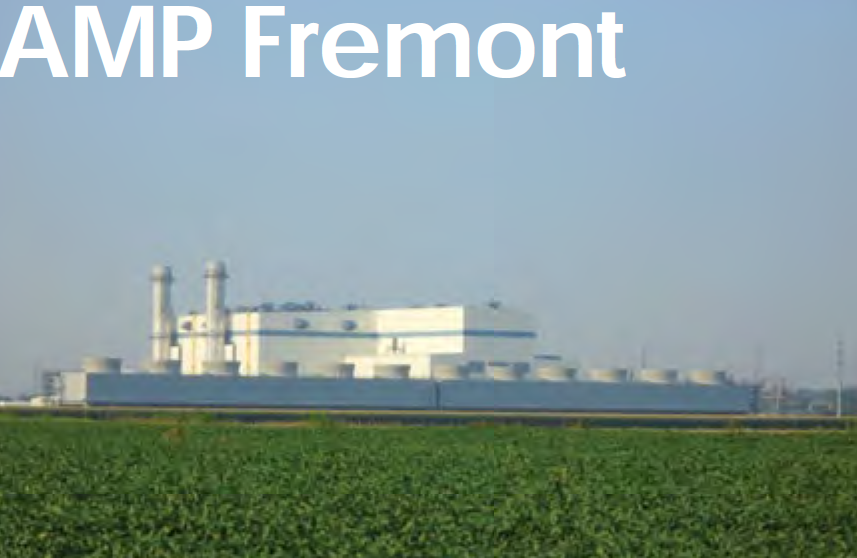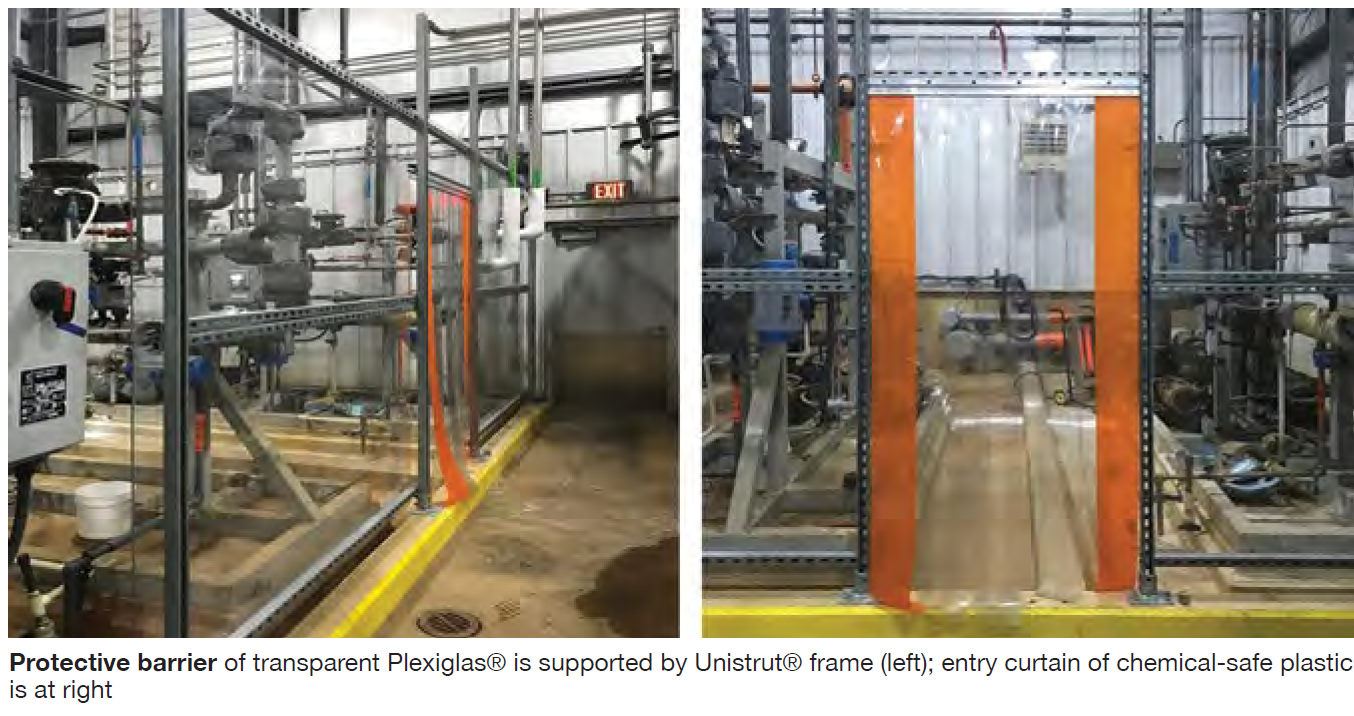Transparent wall, curtain protect staff from chemical hazards

Challenge. Cramped quarters in the water-treatment building at this 501F-powered combined cycle, home to the demin plant and its associated chemical injection skid, created an unintended safety hazard because of the caustic and acid required for regeneration of the mixed-bed resin. While the high-pressure chemical injection systems were equipped with flange shields, an unsuspecting person entering that space could, in the event of a leak, be sprayed with caustic or acid.
More specifically, when you enter the demin plant through the main door, the chemical injection skid is immediately to your right. To your left is a tank that presents an egress concern. Essentially, when you cross the threshold, you pass between dangerous chemicals and a tank that obstructs your escape routes.
Solution. Among the proposed solutions not recommended by the safety committee were signage and relocation of the chemical skids. The use of heavy protective curtains also was evaluated, but personnel thought they could create another hazard: In the event of a leak, the curtains might prevent operators from seeing the spray in time to avoid walking into it.
Fremont’s maintenance team proposed the solution selected: see-through chemical-safe curtains for the entryway and an enclosure of transparent Plexiglas® panels to provide an unimpeded view of the skids (photos). Perhaps the best part of the approved plan was that personnel protection was assured for only about $2000 in labor and materials.

Results. With the new protection barriers, plant personnel can walk across the threshold into the demin plant with complete confidence that, if there were a leak, it would be contained. While the issue of egress is still there, you can turn around easily and exit the main access door without concern of being sprayed by acid or caustic.
Personnel protection was the plant’s top priority, but cost necessarily factored into the solution selection process. While engineering controls always should be the first choice for ensuring plant safety, followed by change of procedures and then PPE, plant management knew relocating the chemical skids would be expensive and not viewed favorably.
Project participants: Craig S Bonesteel, Josh James, Josh Barker, and Rick Moyer.
AMP Fremont Energy Center
Owned by American Municipal Power Inc
Operated by NAES Corp
703-MW, gas-fired, 2 × 1 combined cycle located in Fremont, Ohio
Plant manager: Craig Bonesteel



